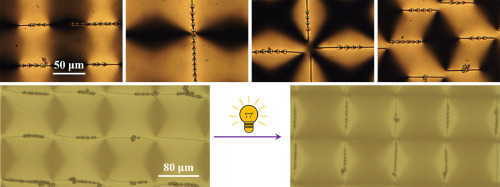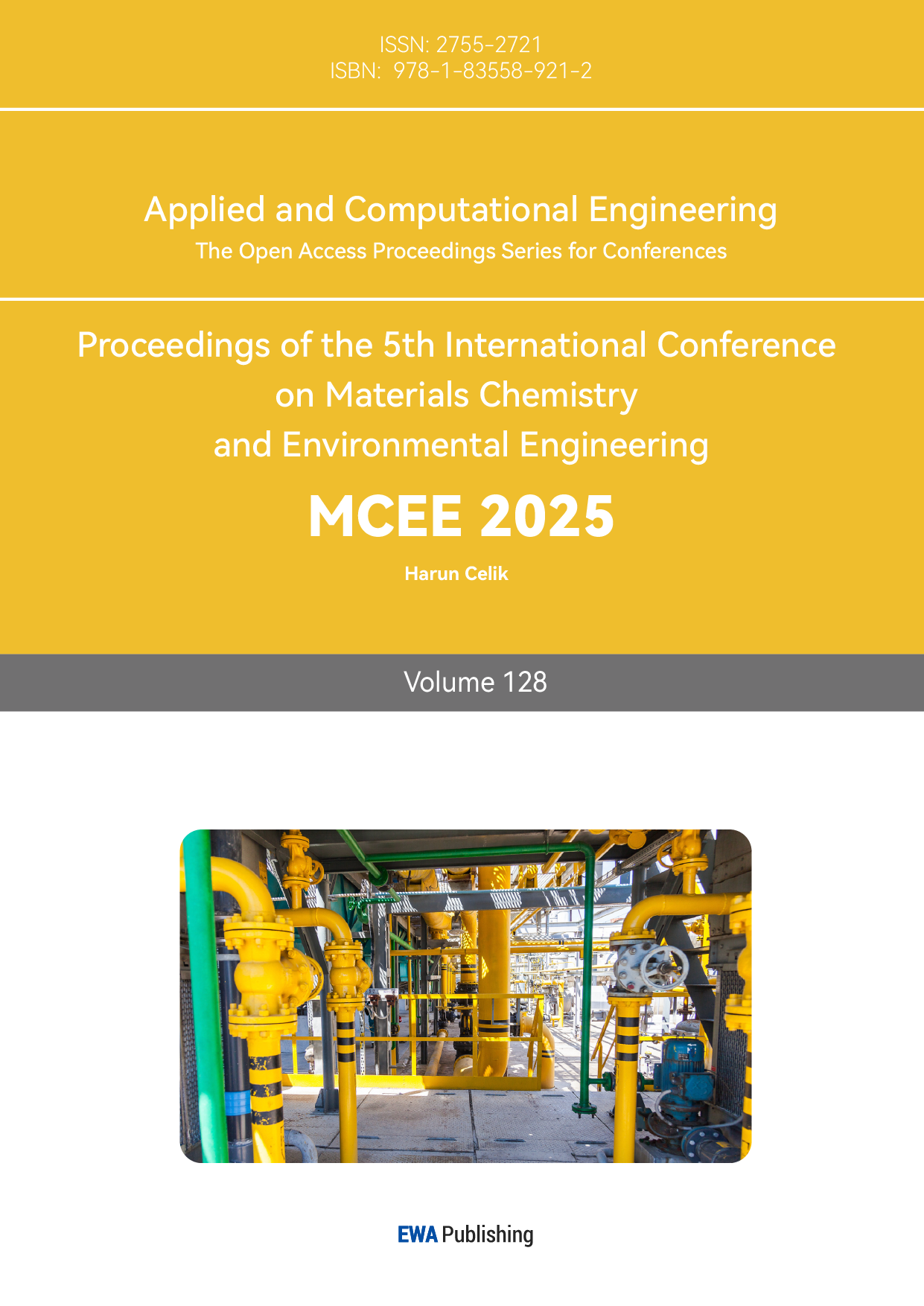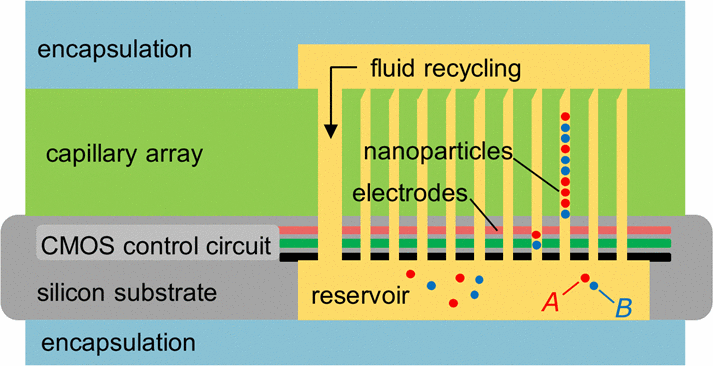1. Introduction
The rapid development of big data, AI, and the IoT has resulted in an exponential growth in data volume, placing unprecedented challenges on traditional information storage technologies. While NAND flash memory has played a significant role in the past development of storage, its technological limitations in terms of storage density, scalability, and other aspects are becoming increasingly evident [1]. Furthermore, solid-state drives, despite their high read and write speeds, are also facing challenges as they approach their technological limits. These issues are forcing us to explore new information storage solutions to cope with the growing storage needs of the future.
Colloidal crystal arrays, composed of highly ordered particles with unique photonic properties, offer a promising high-density, low-power solution for information storage by utilizing particle arrangement for data encoding. Recent research has demonstrated the potential of colloidal crystal arrays for information storage by encoding binary data through controlled particle arrangement [2]. Additionally, using diverse materials like dielectric and metal nanoparticles has been investigated to improve storage efficiency. Efforts have also been made to evaluate the integration of these arrays with existing electronic systems, highlighting their viability as a novel storage solution.
The objective of this study is to develop an information storage and retrieval method based on colloidal crystal arrays. The extant literature is initially examined to evaluate the current status of colloidal crystals as a data storage medium. Subsequently, case studies and experimental data are analyzed to propose a comprehensive method for encoding, storing, and retrieving information using these arrays. This research offers a novel approach that transcends current limitations to achieve ultra-high density and low-power storage, with significant potential to advance information storage technology. By constructing a viable synthesis method, it establishes the foundation for a new era of data storage.
2. Theoretical foundations of colloidal crystal arrays
2.1. Basic concept of colloidal crystals
Colloidal crystals are ordered, periodic structures that are formed through the self-assembly of colloidal particles, which range in size from nanometers to micrometers. The particles can be composed of a variety of materials, including polymers, metals, and semiconductors. The self-assembly process is primarily driven by van der Waals forces, electrostatic forces, and Brownian motion.
The resulting colloidal crystals exhibit a regular, repeating structure analogous to atomic crystals, albeit on a vastly larger scale. This structure endows colloidal crystals with distinctive optical and electrical properties, including photonic band gaps and precise control over light and current [3]. These properties can be tailored based on the size, shape, and material of the colloidal particles and the manner in which they are arranged within the crystal.
2.2. Formation of colloidal crystals
The formation of colloidal crystals typically involves the self-assembly of colloidal solutions into ordered arrays through the processes of evaporation or sedimentation [4]. The most common techniques employed in this process are spin coating, dip coating, and vertical deposition, which can be used to form thin films of colloidal crystals on substrates. The successful formation of colloidal crystals hinges on the ability to control three key variables: the concentration of the colloidal solution, the particle size distribution, and the solvent evaporation rate. These factors directly influence the structure and quality of the final crystals.
Once formed, colloidal crystals can be further modified through techniques such as thermal annealing, chemical etching, or infiltration of other materials, with the objective of enhancing their desired properties for specific applications. In the field of information storage, the precise control of the arrangement of particles in the crystal is of paramount importance for the encoding and retrieval of data. As shown in Figure 1, the arrangement of colloidal particles can be tuned according to the template [5].

Figure 1: Disclination templated self-assembly of colloidal particles [5].
2.3. Structural characteristics of colloidal arrays
The structural characteristics of colloidal crystal arrays are of paramount importance with regard to their potential applications in information storage. The periodic arrangement of particles forms a photonic band gap, which can be utilized for optical data storage and retrieval. Moreover, the introduction of defects or dopants into the crystal lattice enables the encoding of information at designated locations within the array. As shown in Figure 2, this idealized structure of alternating storage shows that two different nanoparticles (A and B) are dispersed in a liquid and, through electrodes, they are arranged in a specific order within the capillaries to store data [6].
Figure 2: Schematic of the colloidal memory concept [6]
3. Design Methods for Information Storage and Retrieval
3.1. Choice of synthetic materials
The selection of materials is of paramount importance for the successful implementation of colloidal crystal-based information storage. The particles utilized to construct the crystals must possess the requisite optical or electrical characteristics to facilitate the encoding and retrieval of data. The most commonly utilized materials include dielectric nanoparticles (such as polystyrene or silica) and metal nanoparticles (such as gold or silver).
Dielectric nanoparticles are preferred due to their tunable optical properties and ease of manipulation by electric fields. Conversely, metal nanoparticles offer advantages in electrical conductivity and plasmonic effects, which can be employed for optical data storage. Furthermore, the selection of materials influences the stability and durability of colloidal crystals, which are crucial factors to contemplate in the context of long-term data storage.
In addition to the particles themselves, the selection of solvents, surfactants, and other additives utilized in the synthesis process can also influence the quality and performance of colloidal crystals. It is of paramount importance to optimize these parameters in order to produce high-quality crystals that are suitable for data storage.
3.2. Application in information storage and retrieval technology
The application of colloidal crystal arrays to information storage and retrieval entails a series of essential stages, including data encoding, storage, and retrieval. The process of data encoding is accomplished by arranging colloidal particles into designated patterns that represent binary information. This can be achieved through techniques such as dielectrophoresis (DEP), optical tweezers, or chemical patterning, depending on the level of control and precision required [7].
Once the data has been encoded, the colloidal crystals serve as the storage medium. The stability of the crystal structure ensures the integrity of the data over time, while the tunable properties of the particles facilitate an efficient retrieval process. The retrieval process is typically accomplished through the detection of the arrangement of particles via optical or electrical methods, such as scanning electron microscopy (SEM), atomic force microscopy (AFM), or spectroscopy [8].
Furthermore, the integration of colloidal crystal arrays with existing electronic systems represents a significant area of consideration. This may entail the development of hybrid devices that integrate colloidal crystals with traditional semiconductor materials, thereby facilitating seamless data transfer between the two.
4. Discussion
4.1. Case analysis
In the context of emerging information storage technologies, colloidal crystal arrays have demonstrated considerable potential for a wide range of applications and have shown technical feasibility in laboratory studies. The analysis of pertinent practical cases is instrumental in evaluating the storage performance and challenges associated with this technology. For example, Rosmeulen et al. investigated the potential of integrating colloidal crystals into liquid storage systems, demonstrating that colloidal crystals can be utilized for ultra-high-density volumetric data storage [6]. However, the study also indicated that the intricacy of system design, particularly the exact arrangement of colloidal particles, represents a significant technical hurdle.
Similarly, Guo et al. investigated the potential of three-dimensional colloidal crystals for optical data storage [4]. The introduction of defects or dopants into the crystal lattice enabled the efficient and stable encoding of information. This method demonstrates that the structure of colloidal crystals can be utilized for long-term data storage. However, the study also highlighted the numerous challenges associated with the transition of these promising research outcomes into large-scale, commercial production, particularly in terms of ensuring array stability and reducing production costs.
4.2. Storage performance of colloidal crystal arrays
The storage properties of colloidal crystal arrays are contingent upon a number of factors, including the intrinsic material properties of the arrays themselves, the size of the particles comprising the arrays, and the accuracy of the encoding process. One of the most significant advantages is the capacity for ultra-high storage density. The high-density storage afforded by colloidal crystals is enabled by their three-dimensional ordered structure, which allows for data storage at multiple levels and, moreover, permits the further increase of storage capacity through the precise control of particle arrangement.
Furthermore, the low power consumption of colloidal crystals represents a significant advantage. As this technology relies on electric fields or optical methods to manipulate colloidal particles, it requires less energy, thereby conferring significant advantages in energy conservation. These findings have significant implications for the future applications of this technology in large-scale data centers and portable devices.
However, the storage properties of colloidal crystals are contingent upon the long-term stability of the crystal structure [9]. The configuration of colloidal particles may be disrupted by external environmental changes or mechanical stress, which could result in data loss or damage. Consequently, enhancing the durability of the array and ensuring its stability under diverse operational conditions represents a pivotal challenge that must be addressed.
4.3. A comparison with current information storage technologies
In comparison with the current mainstream information storage technologies, such as NAND flash memory and hard disk drives, colloidal crystal arrays demonstrate a number of distinctive advantages. Firstly, the three-dimensional structure of colloidal crystals has the potential to circumvent the storage density limitations of NAND flash memory, thereby markedly enhancing the storage capacity per unit volume. Secondly, the low power consumption characteristics of colloidal crystals afford them significant advantages in terms of energy efficiency, particularly in scenarios where long-term low-power operation is required.
Nevertheless, colloidal crystal arrays still encounter a number of significant challenges in practical applications. One of the most significant challenges associated with colloidal crystal arrays is the complexity of their manufacturing process. The intricate and meticulous fabrication of colloidal crystals necessitates an exceptionally delicate and precise control over the manufacturing process, which in turn renders it more intricate and costly. Furthermore, the process technology necessary to guarantee their long-term stability is also highly demanding, particularly when data is stored in multiple colloidal layers. The arrangement of particles must remain stable to prevent information loss.
Another significant challenge is the commercialization of colloidal crystal arrays. Despite the technology's success in laboratory settings, numerous technical and economic challenges remain before it can be widely implemented in practical applications. In order for this technology to gain widespread acceptance in the market, it is essential to address two pivotal concerns: reducing production costs and enhancing stability and reliability.
4.4. Advantages and Challenges of Colloidal Crystal Array Information Storage
The numerous advantages of colloidal crystal arrays in information storage indicate that they have significant potential in the future field of information technology. First and foremost, their ultra-high storage density and three-dimensional data storage capacity render colloidal crystals a crucial component in large-scale data storage systems. Secondly, the low power consumption characteristics of colloidal crystals render them an optimal selection for data storage scenarios that necessitate both high efficiency and energy conservation [10]. Moreover, colloidal crystals possess tunable optical and electrical properties, offering a vast design space for the creation of multifunctional and high-performance storage devices.
Nevertheless, colloidal crystal arrays remain subject to certain challenges that must be addressed in order to facilitate their practical applications. First, the manufacturing process of colloidal crystals is complex and costly. The precise arrangement of colloidal particles in crystals necessitates the use of highly sophisticated manufacturing equipment and technology, which presents a significant challenge to the commercial promotion of this technology. Secondly, the stability of the array remains a significant challenge in technological development. Even minor alterations in the external environment can result in the displacement of colloidal particles, potentially compromising the integrity of stored data. Furthermore, the read and write speeds and efficiencies of colloidal crystal arrays are not yet fully aligned with those of existing storage technologies, representing an important area for future research.
5. Conclusion
This study examines the potential of colloidal crystal arrays as a means of information storage and presents a theoretical framework for their application. A review of existing literature and case analysis has enabled the proposal of a method for synthesizing colloidal crystal arrays for high-density information storage. It has been demonstrated that colloidal crystal arrays possess a number of advantageous characteristics, including ultra-high storage density, low power consumption, and adjustable optical and electrical properties. Nevertheless, the intricacy of the manufacturing process, the instability of the technology, and the difficulty of integrating it with existing technologies present significant challenges to the realization of this technology.
Nevertheless, as an emerging storage technology, colloidal crystal arrays have considerable potential for further development. However, this study is primarily theoretical and lacks empirical validation, which leaves uncertainties regarding the practical feasibility and scalability of the proposed approaches. Additionally, the absence of experimental testing means critical factors such as stability, manufacturing challenges, and compatibility with existing systems remain speculative. Future research should prioritize experimental investigations to assess the real-world applicability of colloidal crystal arrays, while also focusing on overcoming the constraints of existing technologies, enhancing manufacturability and reliability, and developing efficient data storage and retrieval mechanisms. Furthermore, exploring integration with current data storage technologies will be essential. It is anticipated that with continued advancements, colloidal crystal arrays will assume a significant position in the domain of information storage, thereby propelling data storage technology into a new era.
References
[1]. Kim, K. (2021) "The smallest engine transforming humanity: The past present and future", 2021 IEEE International Electron Devices Meeting (IEDM), pp. 1.1.1-1.1.8
[2]. Myers, C. J., Celebrano, M. and Krishnan, M. (2015) "Information storage and retrieval in a single levitating colloidal particle", Nature Nanotech., vol. 10, pp. 886-891
[3]. Kim, SH., Lee, S., Yang, SM. et al. (2011) Self-assembled colloidal structures for photonics. NPG Asia Mater 3, 25–33
[4]. Guo, S. et al. (2021) Research status and development trend of three-dimensional colloidal crystals, Journal of Industrial and Engineering Chemistry, 96, 34-58
[5]. Guo, Y. et al. (2024) Directing and reconfiguring colloidal assembly by disclination networks in nematic liquid crystal as templates, Giant, 17, 100228, ISSN 2666-5425
[6]. Rosmeulen, M. et al. (2022), “Liquid Memory and the Future of Data Storage,” IMW, pp. 1-4
[7]. Kim, D., Sonker, M. and Ros, A. (2019) "Dielectrophoresis: From molecular to micrometer scale analytes", Anal. Chem., vol. 91, no. 1, pp. 277-295
[8]. Zhang, C., Muñetón Díaz, J., Muster, A. et al. (2024) Determining intrinsic potentials and validating optical binding forces between colloidal particles using optical tweezers. Nat Commun 15, 1020
[9]. Lee, S., Calcaterra, H.A., Lee, S. et al. (2022) Shape memory in self-adapting colloidal crystals. Nature 610, 674–679
[10]. Liu, X. et al. (2023) ACS Appl. Mater. Interfaces 15, 48, 55991–56002
Cite this article
Shen,X. (2025). Colloidal Crystal Arrays for New Data Storage of the Future. Applied and Computational Engineering,128,138-143.
Data availability
The datasets used and/or analyzed during the current study will be available from the authors upon reasonable request.
Disclaimer/Publisher's Note
The statements, opinions and data contained in all publications are solely those of the individual author(s) and contributor(s) and not of EWA Publishing and/or the editor(s). EWA Publishing and/or the editor(s) disclaim responsibility for any injury to people or property resulting from any ideas, methods, instructions or products referred to in the content.
About volume
Volume title: Proceedings of the 5th International Conference on Materials Chemistry and Environmental Engineering
© 2024 by the author(s). Licensee EWA Publishing, Oxford, UK. This article is an open access article distributed under the terms and
conditions of the Creative Commons Attribution (CC BY) license. Authors who
publish this series agree to the following terms:
1. Authors retain copyright and grant the series right of first publication with the work simultaneously licensed under a Creative Commons
Attribution License that allows others to share the work with an acknowledgment of the work's authorship and initial publication in this
series.
2. Authors are able to enter into separate, additional contractual arrangements for the non-exclusive distribution of the series's published
version of the work (e.g., post it to an institutional repository or publish it in a book), with an acknowledgment of its initial
publication in this series.
3. Authors are permitted and encouraged to post their work online (e.g., in institutional repositories or on their website) prior to and
during the submission process, as it can lead to productive exchanges, as well as earlier and greater citation of published work (See
Open access policy for details).
References
[1]. Kim, K. (2021) "The smallest engine transforming humanity: The past present and future", 2021 IEEE International Electron Devices Meeting (IEDM), pp. 1.1.1-1.1.8
[2]. Myers, C. J., Celebrano, M. and Krishnan, M. (2015) "Information storage and retrieval in a single levitating colloidal particle", Nature Nanotech., vol. 10, pp. 886-891
[3]. Kim, SH., Lee, S., Yang, SM. et al. (2011) Self-assembled colloidal structures for photonics. NPG Asia Mater 3, 25–33
[4]. Guo, S. et al. (2021) Research status and development trend of three-dimensional colloidal crystals, Journal of Industrial and Engineering Chemistry, 96, 34-58
[5]. Guo, Y. et al. (2024) Directing and reconfiguring colloidal assembly by disclination networks in nematic liquid crystal as templates, Giant, 17, 100228, ISSN 2666-5425
[6]. Rosmeulen, M. et al. (2022), “Liquid Memory and the Future of Data Storage,” IMW, pp. 1-4
[7]. Kim, D., Sonker, M. and Ros, A. (2019) "Dielectrophoresis: From molecular to micrometer scale analytes", Anal. Chem., vol. 91, no. 1, pp. 277-295
[8]. Zhang, C., Muñetón Díaz, J., Muster, A. et al. (2024) Determining intrinsic potentials and validating optical binding forces between colloidal particles using optical tweezers. Nat Commun 15, 1020
[9]. Lee, S., Calcaterra, H.A., Lee, S. et al. (2022) Shape memory in self-adapting colloidal crystals. Nature 610, 674–679
[10]. Liu, X. et al. (2023) ACS Appl. Mater. Interfaces 15, 48, 55991–56002










